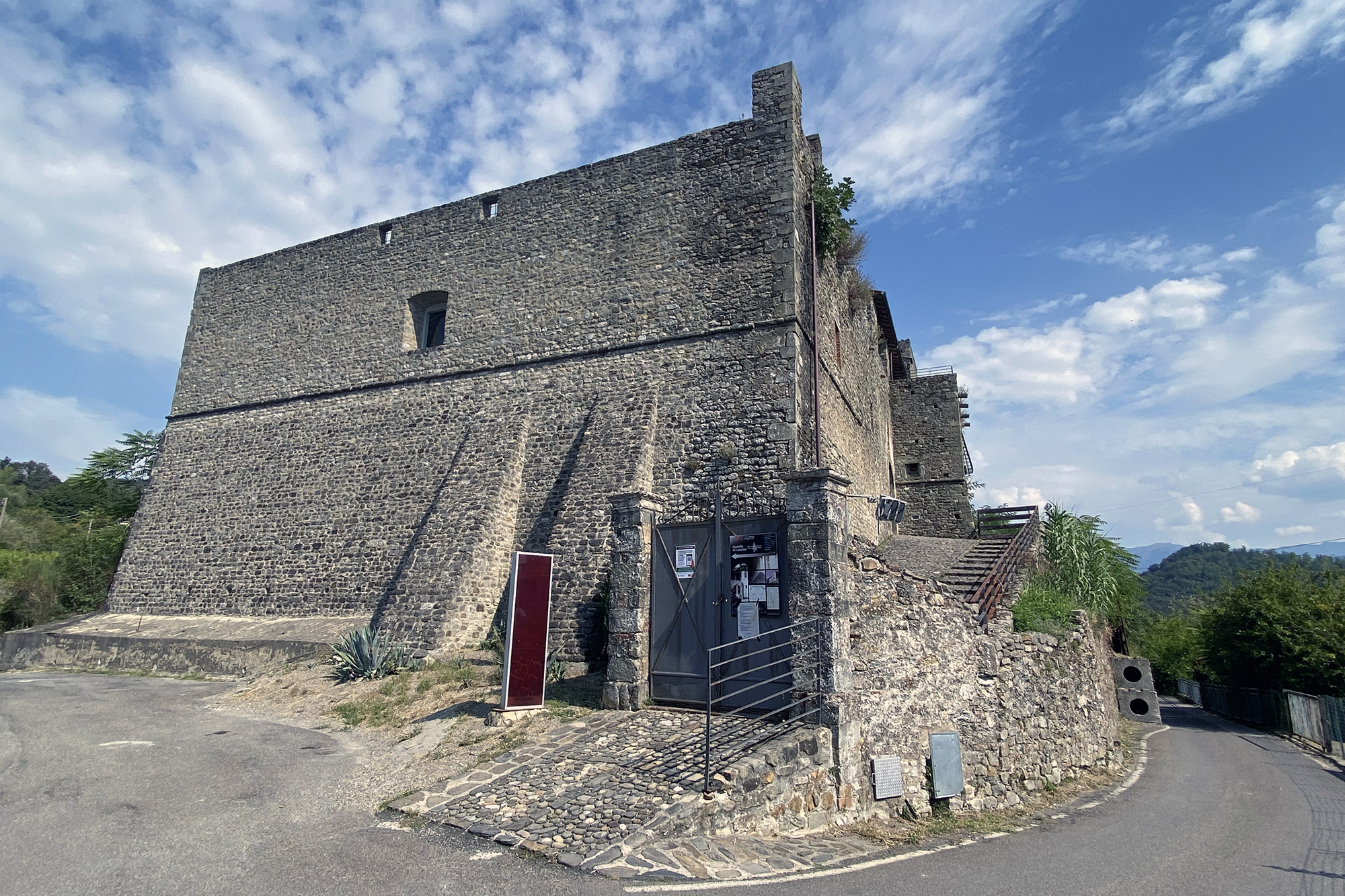
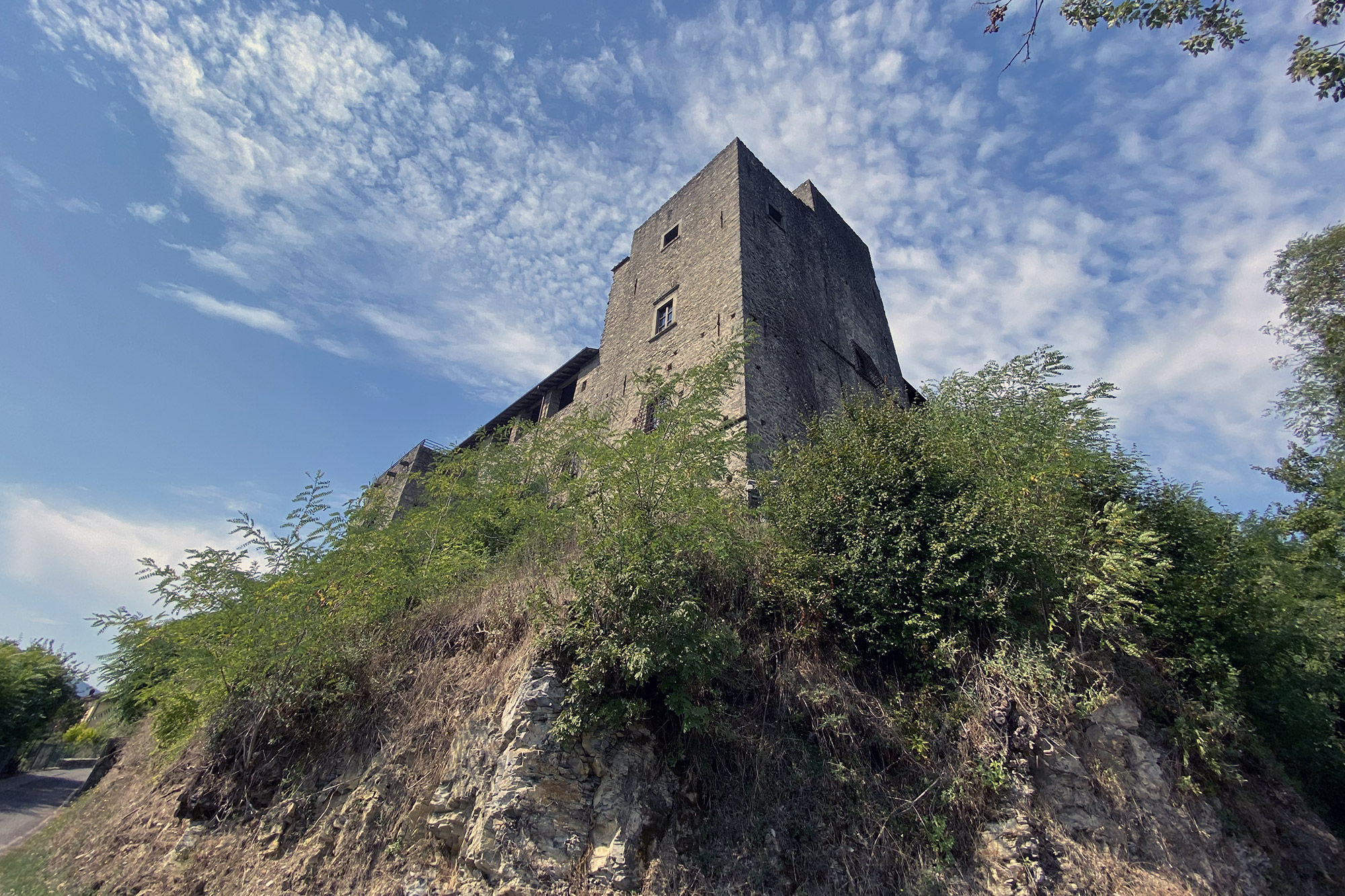
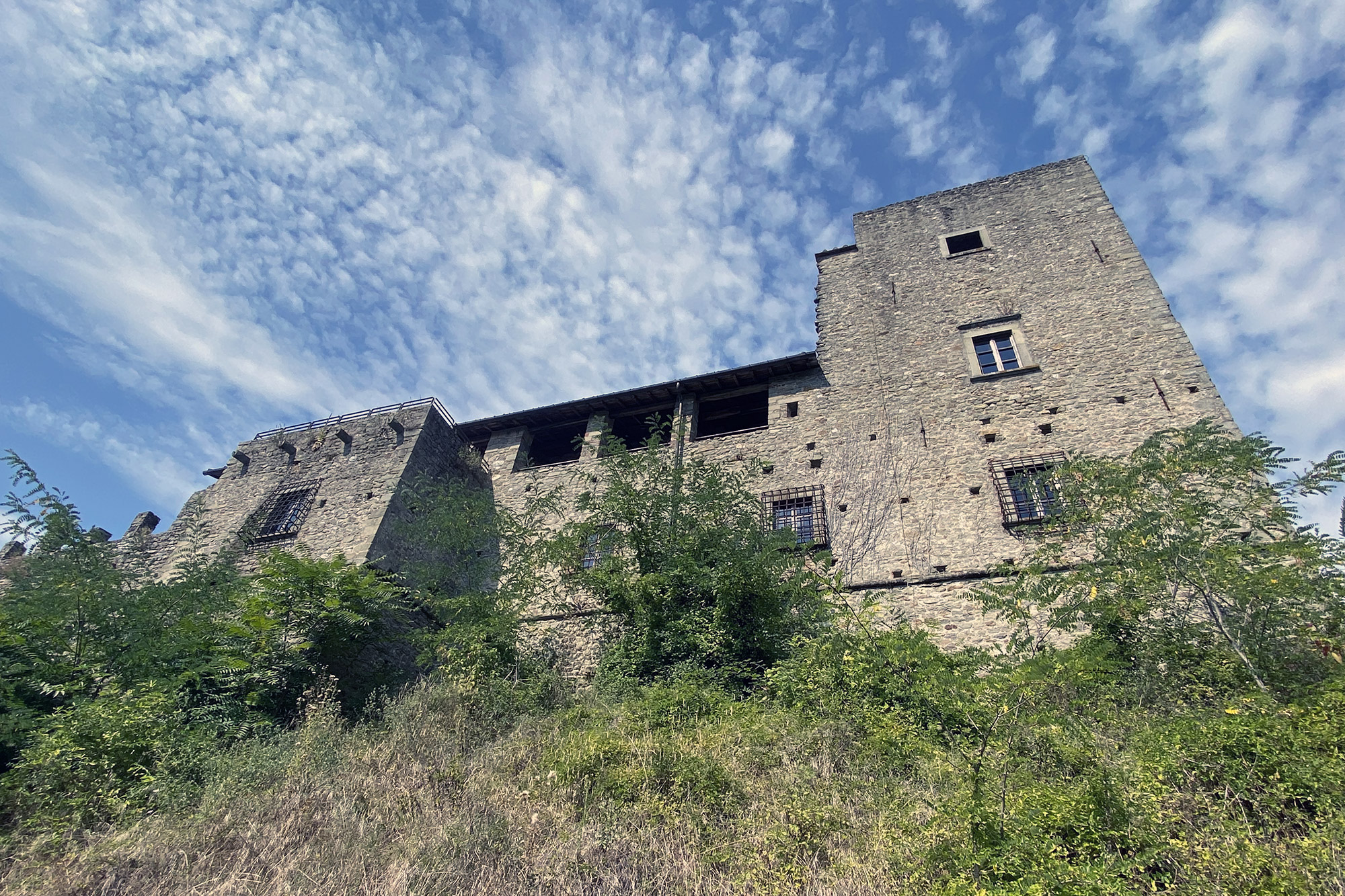
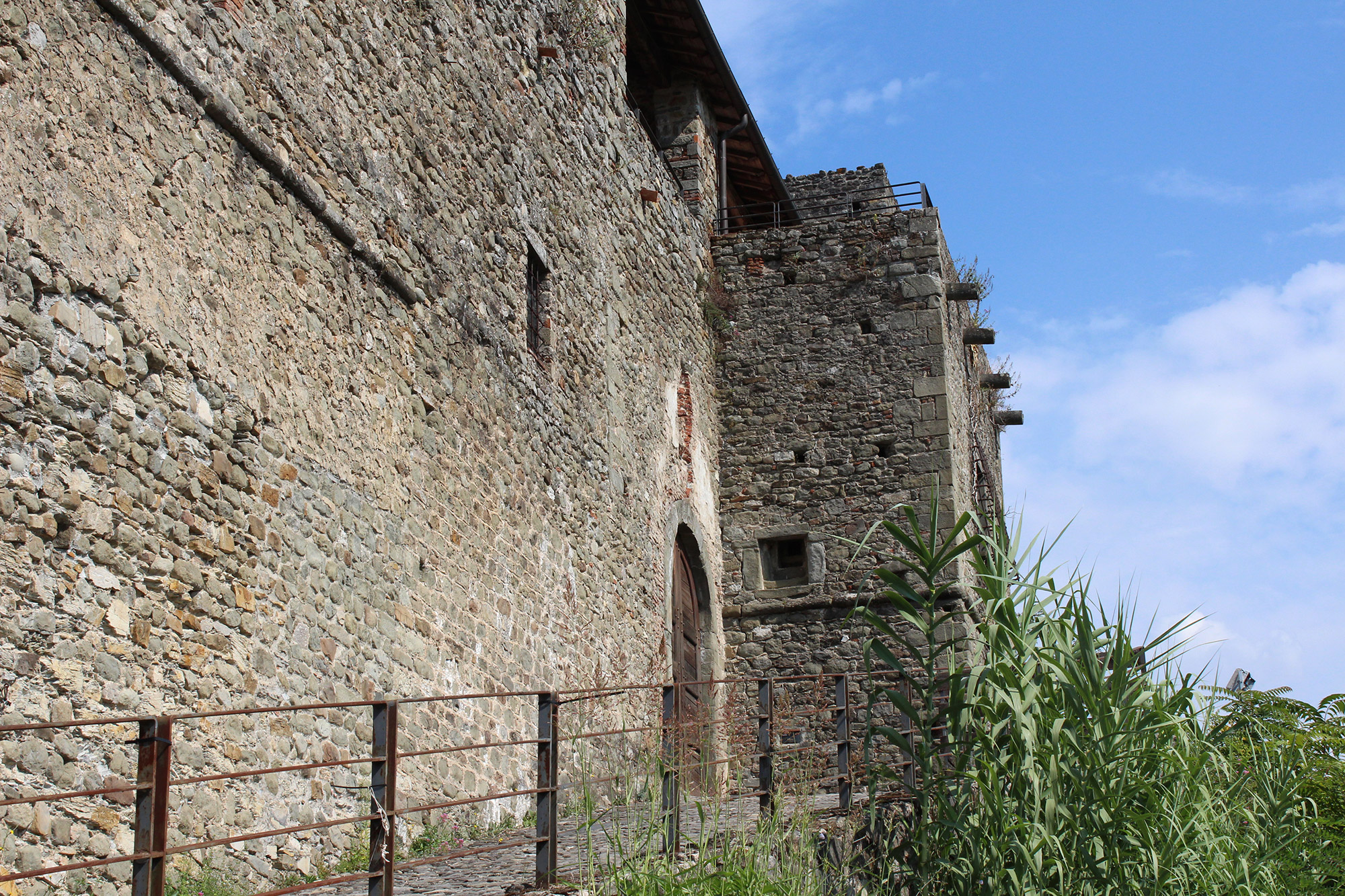
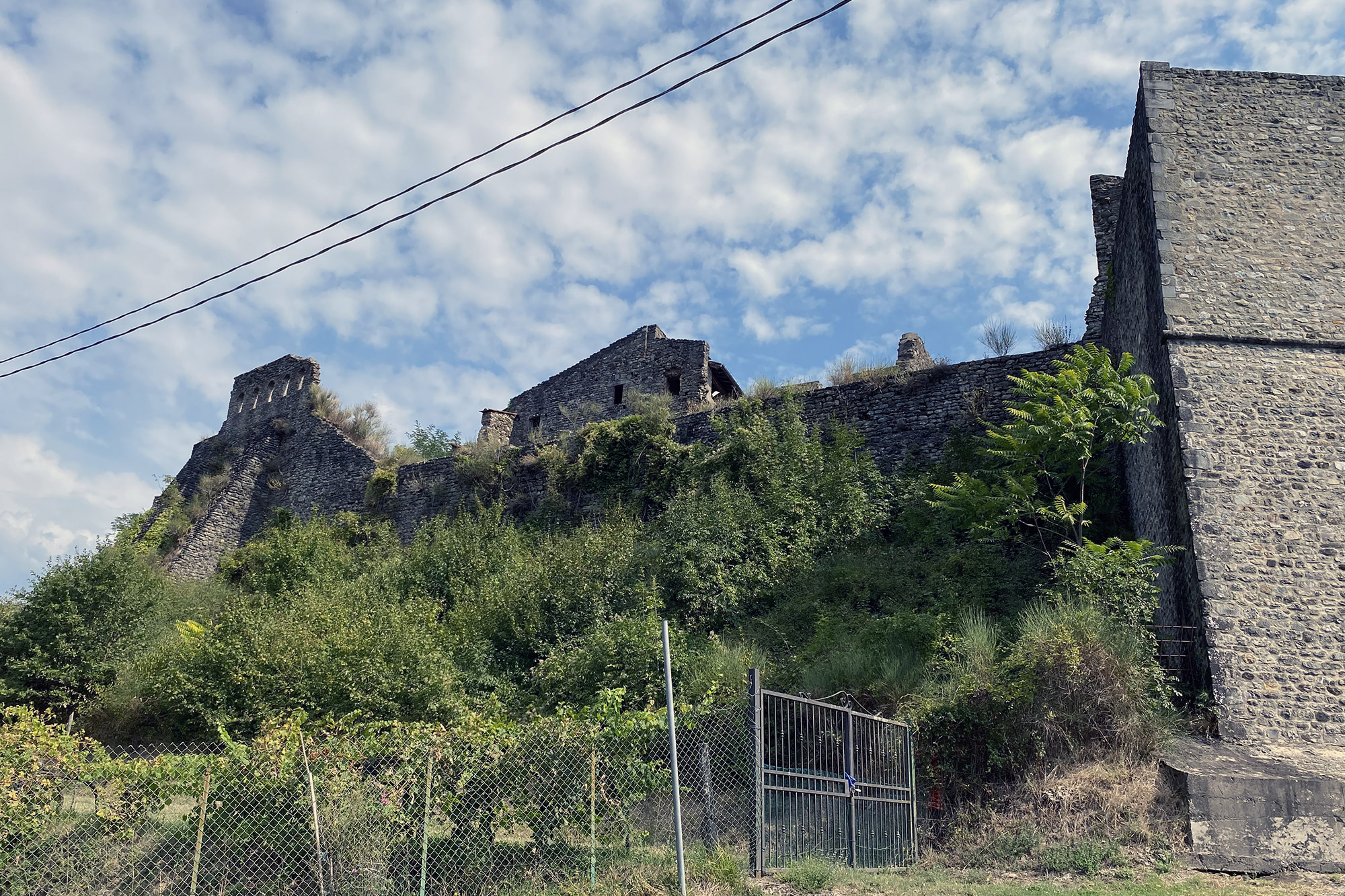
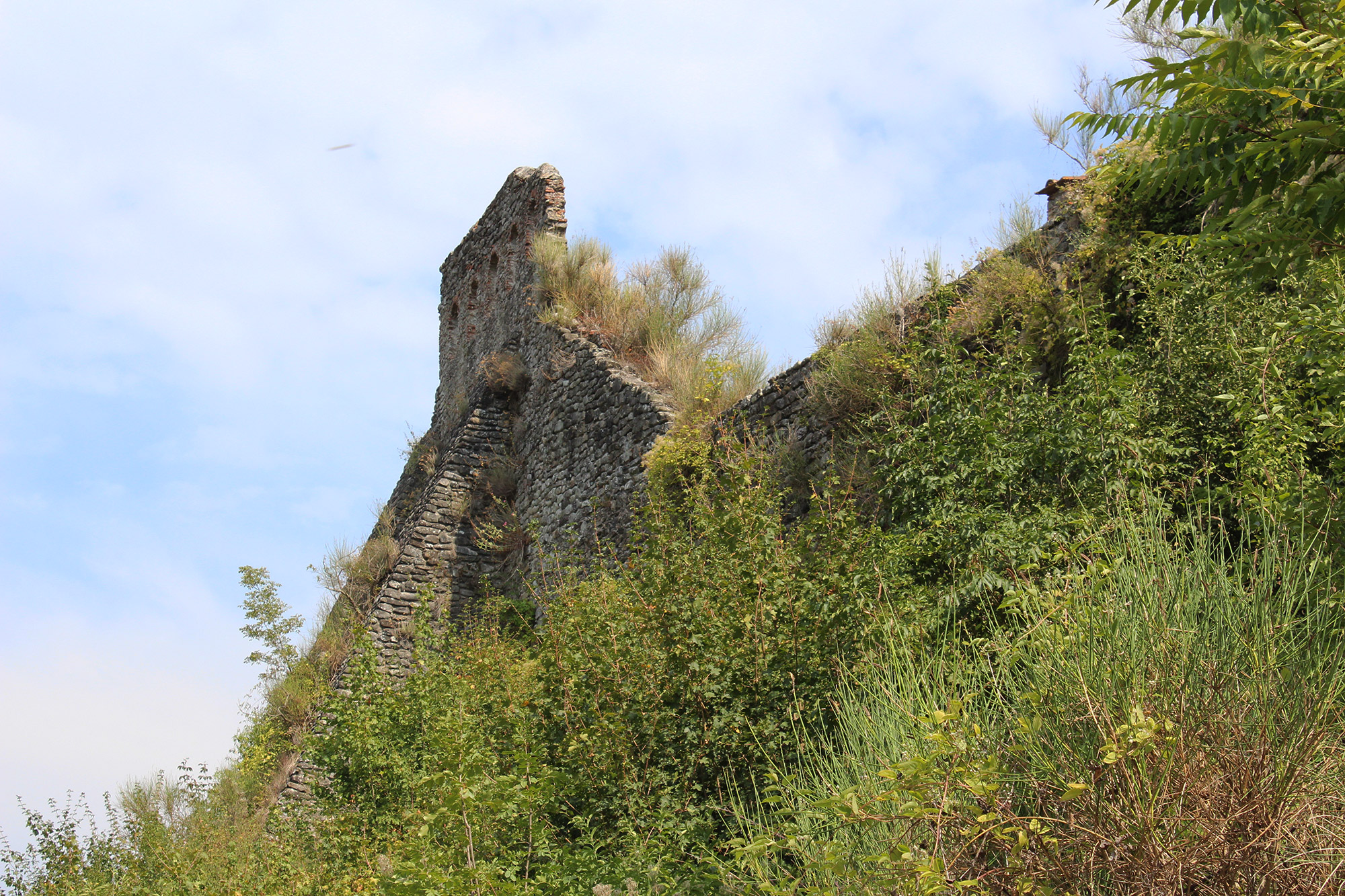
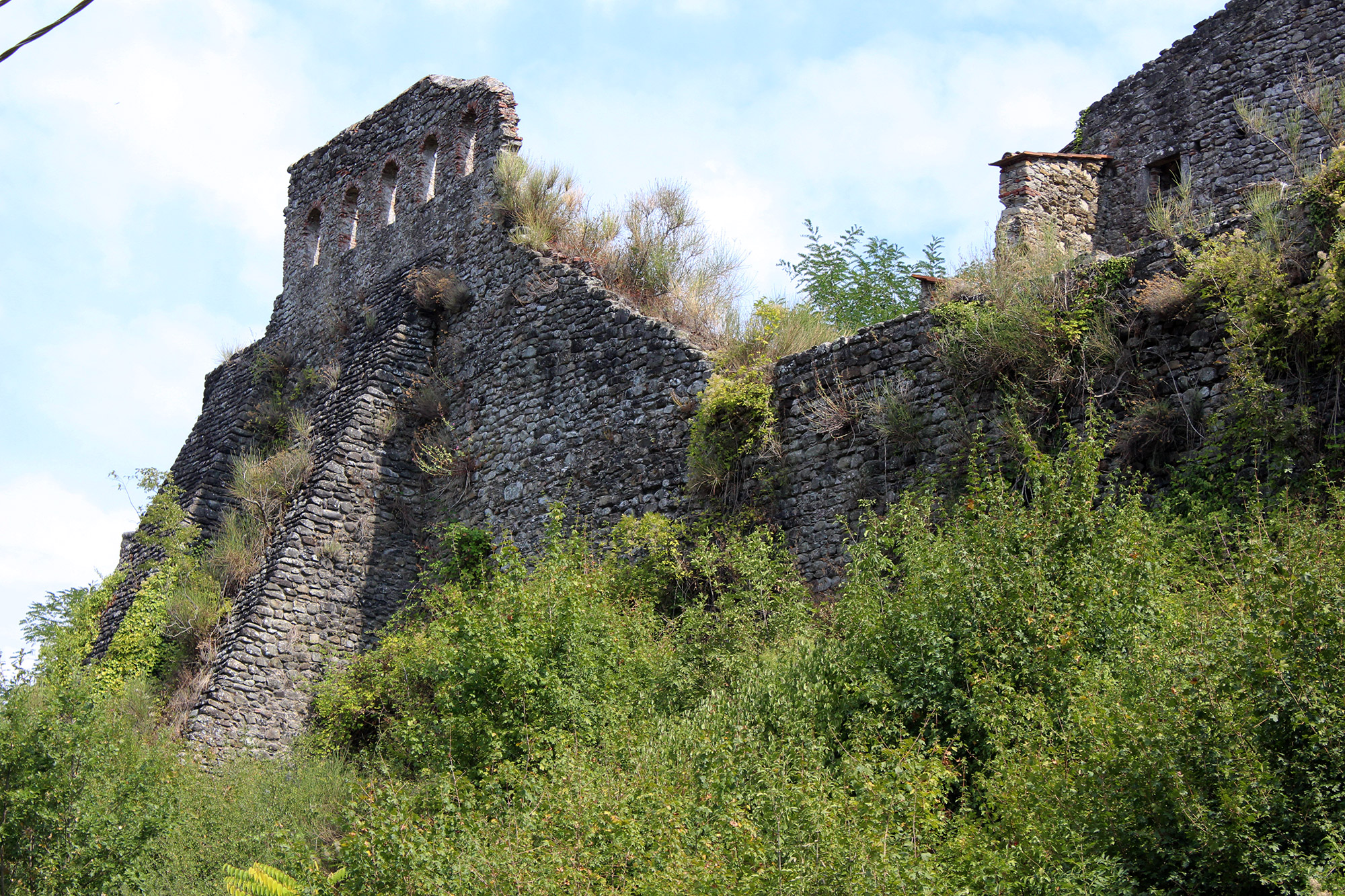
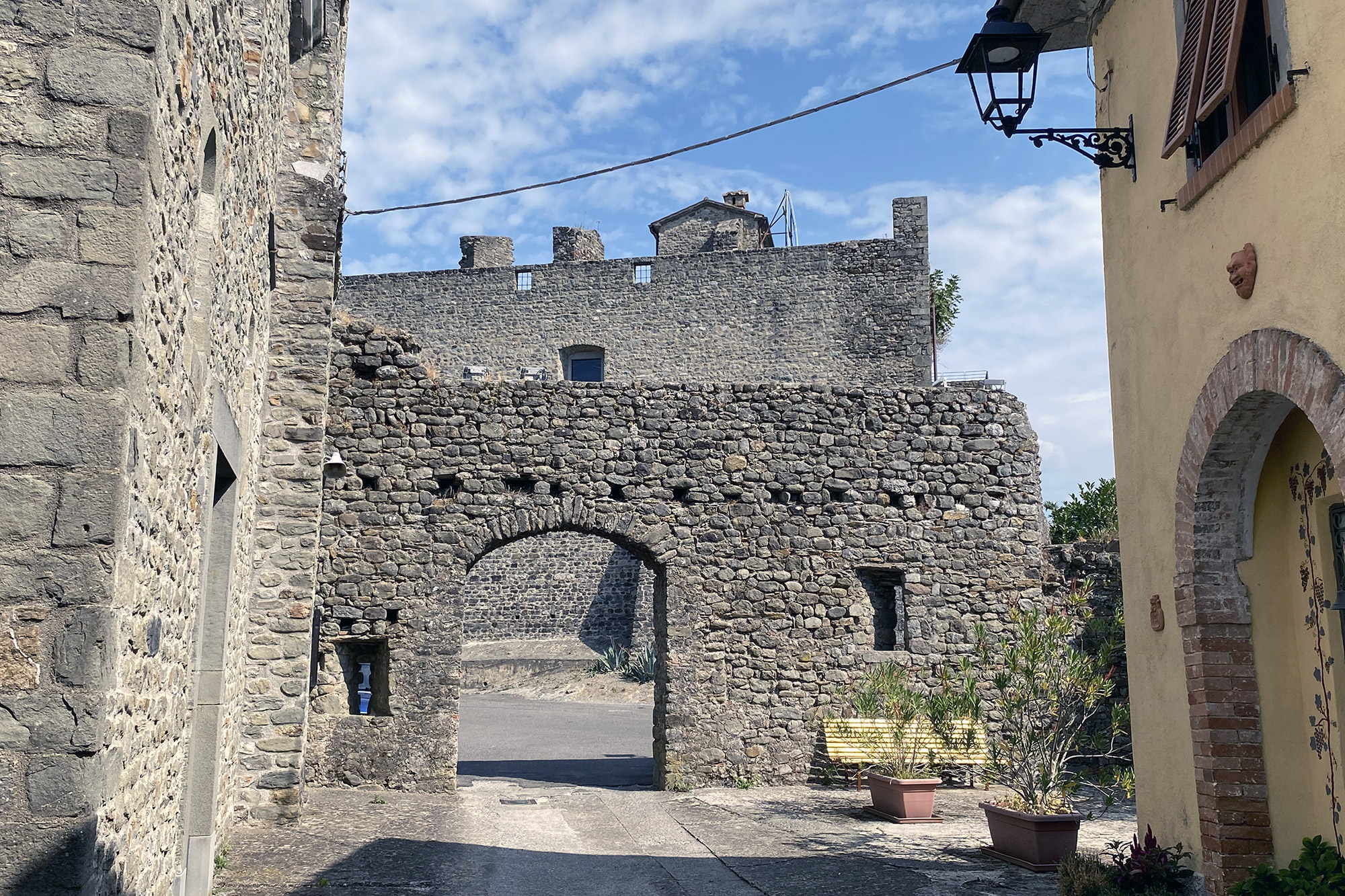
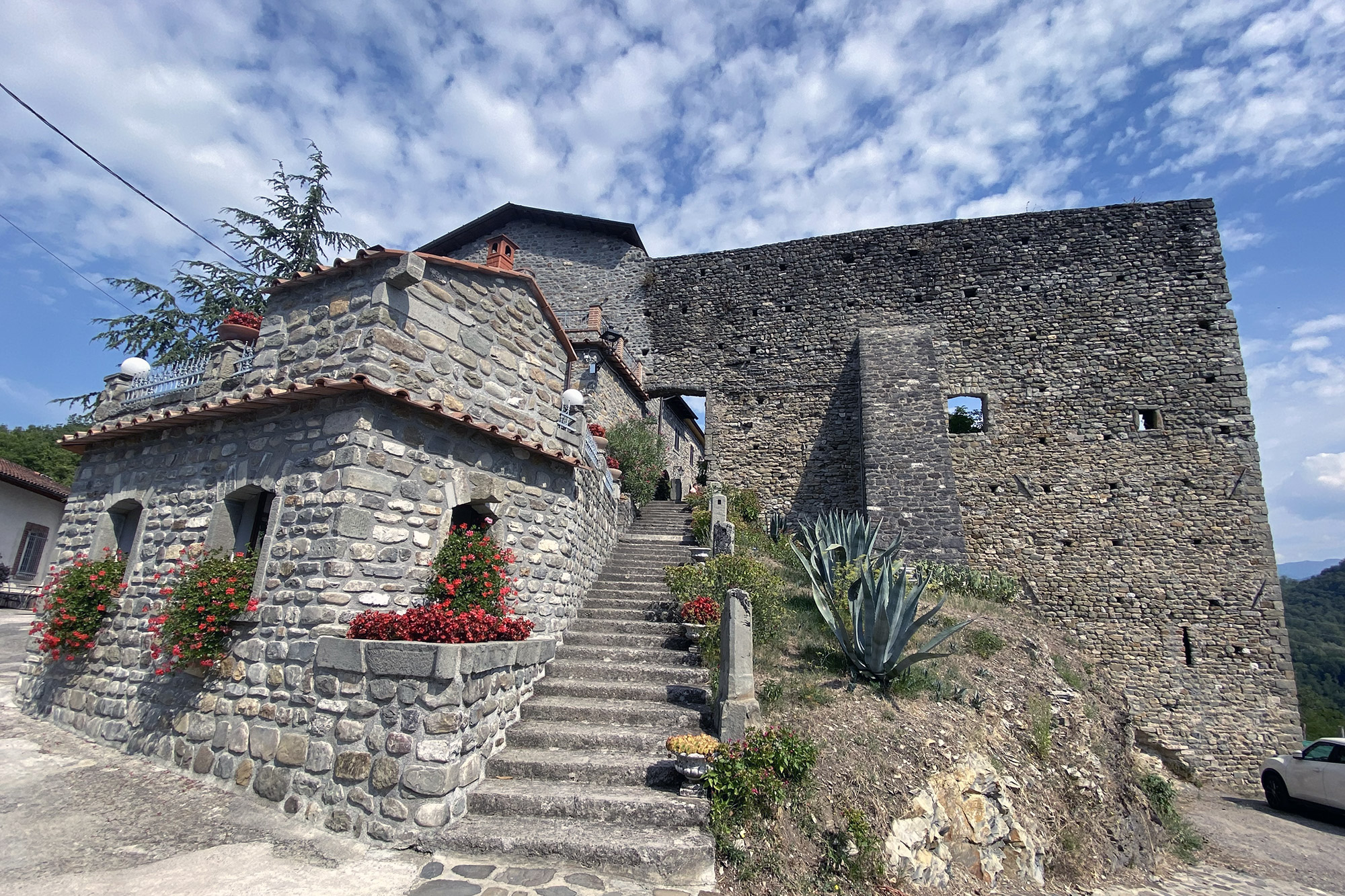
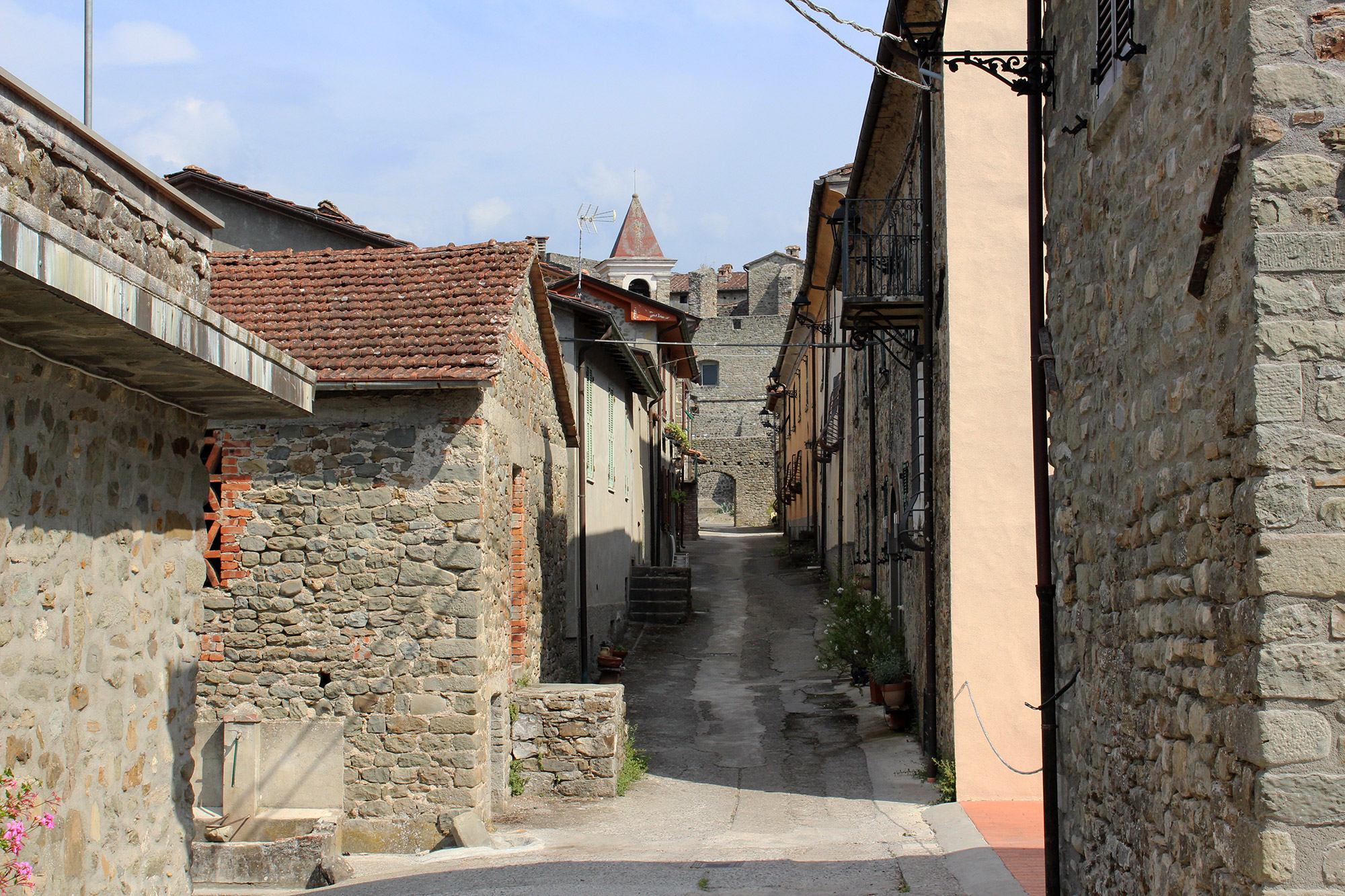










How to reach
The castle and the fortified village are easily visible from the A15 Cisa motorway between the Aulla and Pontremoli. It is about 13 km from the Pontremoli exit. From here follow the SP31 passing Ponte Teglia, Arpiola, Talavorno, Ponte Magra, where the sign for Lusuolo appears on the right. It is also possible to exit at the Aulla tollgate, 9 km from Lusuolo. From here you pass Terrarossa, cross the bridge over the Magra, then Barbarasco, skirt the motorway and begin the climb up a winding, narrow road towards the village.
History
Lusuolo is a characteristic village stretched out along the crest of a hill overlooking the right bank of the Magra river, halfway between Villafranca and Mulazzo. The castle and the village are one of the most interesting examples of civil and military medieval architecture fusion. In fact, Lusuolo develops along a single road, closed at the end by two gates, of which only the southern one is original, and protected on the sides by the sheer drop of the hill and the imposing walls.
The first medieval castle was built to defend and control the bottom of the valley and a variant of the Via Francigena that joined the main route from here, crossing the river near the ancient ford at the church of Santa Maria di Groppofosco, known as Chiesaccia, now a ruin.
For its strategic position, Lusuolo, which originally belonged to the fief of Corrado l'Antico Marchese di Mulazzo, was often at the centre of major clashes between the powers that contended control of Lunigiana (Florence, Genoa and Milan) that led to its destruction and reconstruction several times. The most ruinous siege was in 1449 by the army commanded by Galeotto di Campofregoso of the Republic of Genoa. In 1467, with the help of the Marquis of Fosdinovo and the Duke of Milan Galeazzo Maria Sforza, the Malaspina regained control of the castle, although damaged. Lusuolo remained at the centre of internal struggles and continuous family disputes regarding divisions and rights with the constant interference of Milan and Florence.
In the second half of the 16th century Ercole Malaspina placed himself under the protection of the Grand Duke of Tuscany Francesco I de' Medici and in 1575 granted him the entire lordship. Definitively annexed to the state of Florence, at the beginning of the 17th century the castle was rebuilt, enlarged and transformed into a fortress suitable for resisting artillery. At the end of the same century began the gradual dismantling of Lusuolo, due to the annexation of Pontremoli to the Grand Duchy with the consequent loss of its strategic importance as the northernmost point of Tuscany for the Florentines.
The absence of written documentation and the frequent reconstructions of the castle make impossible to historically define the period of its original construction and the subsequent building phases, as well as destination of use of the buildings within the curtain walls. The oldest structures can be seen on the north side, in correspondence with a tower incorporated in the external walls. The interior is characterised by a large trapezoidal courtyard with a central well. The northern part of this courtyard has a structure with spacious interiors, large chimneys and wide vaults. It is conceivable that in the past it could have been the residence of the marquis while the south side, partially collapsed, was probably used as a barracks. The entrance was modified by the Medici to allow the transport of the bombards to the first floor. The village has imposing triangular-shaped walls and a southern gate which is still the main entrance today, near which stands the church dedicated to St. Matthew.
More info & notes
The castle houses the Museum of the Emigration of the People of Tuscany.
Ph: +39 0585 816524
Email: info@istitutovalorizzazionecastelli.it
Visiting hours:
Saturday,Sunday and holidays from 15:00 to 18:00